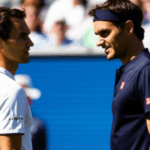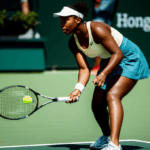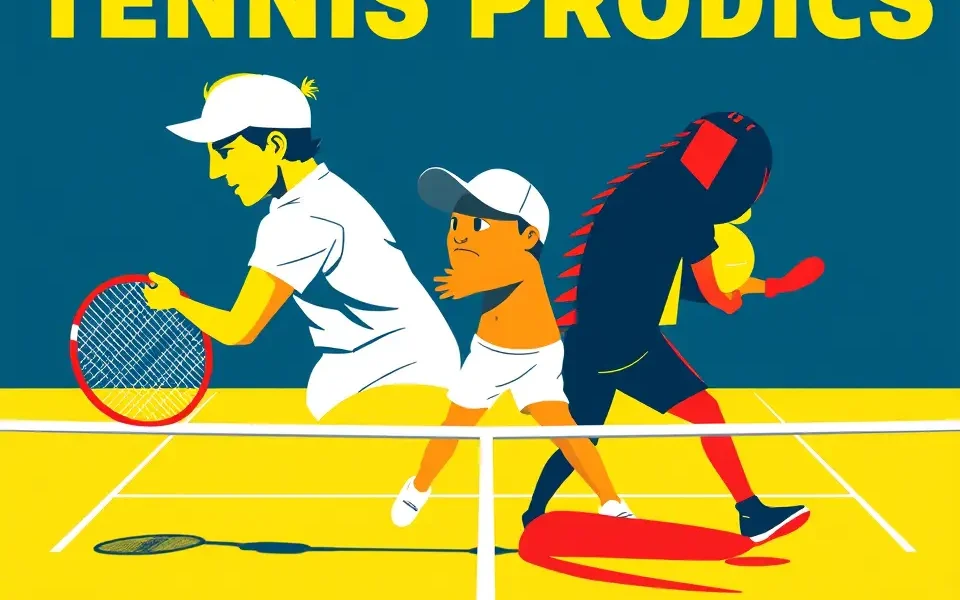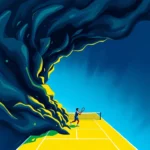Carlos Alcaraz, the young Spanish sensation, has taken the tennis world by storm. With his explosive game and rapid rise to the top, comparisons to legends like Roger Federer and Rafael Nadal are inevitable. Recently, former US Open champion Andy Roddick weighed in on this debate, suggesting that Alcaraz’s grass-court game bears a closer resemblance to Federer than Nadal. But what exactly makes Alcaraz’s style so unique, and why is Roddick drawing this comparison? Let’s delve into the details.
Alcaraz’s Unique Playing Style
Carlos Alcaraz is known for his aggressive and dynamic approach to tennis. He’s an aggressive baseliner who dictates play with powerful, spin-heavy shots. His forehand is a major weapon, executed with a straight, extended arm, drawing comparisons to both Roger Federer and Rafael Nadal.
Here are some key elements of Alcaraz’s playing style:
- Aggressive Baseliner: Alcaraz likes to control points from the baseline, using his power and spin to push opponents back.
- Powerful Forehand: His forehand is a thing of beauty, allowing him to dictate play and finish points quickly.
- Quick Footwork: Alcaraz covers the court with incredible speed and agility, reminiscent of his idol, Rafael Nadal.
- Net Play: He’s comfortable at the net and has excellent hand skills, making him a threat in all areas of the court.
- Drop Shot: Alcaraz uses the drop shot effectively, disguising it well and catching opponents off guard.
- Adaptability: Alcaraz can transition between different playing styles and surfaces, making him a versatile and dangerous opponent.
Roddick’s Comparison: Federer vs. Nadal
Andy Roddick, in a recent episode of his “Served With Andy Roddick” podcast, shared his thoughts on Alcaraz’s game, particularly on grass. He believes that Alcaraz’s understanding and execution on grass are more akin to Federer’s than Nadal’s.
Roddick highlighted Alcaraz’s ability to seamlessly transition from a clay-court mentality to a grass-court approach. He noted that Alcaraz instinctively takes the right angles to the ball and chooses the correct shot, something that even Nadal had to work on more intentionally.
“The lines that he takes from the back are never wrong. If he wants to cut one off, it’s Roger-esque,” Roddick said. “Roger on his forehand never took a bad angle or a bad line – to the ball, in stride – he’s able to read the pacing, adjust his footwork, and then either transition off the forehand in, or not.”
Roddick emphasizes that Alcaraz’s adaptability is closer to Federer than Nadal, who had to adjust: “Even Rafa had to work and be a little bit more intentional about it than Carlos going from clay to grass. On clay you have to take different angles to the ball, right? He reads all of that in half a second, and he is so good about his angles to the ball. You never really see that awkward grass court out of position that you see with the rest of us chuckers, right?”
Federer’s Grass-Court Prowess
Roger Federer is widely regarded as one of the greatest grass-court players of all time. His eight Wimbledon titles are a testament to his mastery of the surface. Federer’s success on grass can be attributed to several factors:
- Aggressive Style: Federer’s aggressive, attacking style is well-suited to the fast-paced nature of grass courts.
- Serve and Volley: He’s a master of the serve and volley, putting pressure on opponents and finishing points quickly.
- Slice Backhand: Federer’s slice backhand is a weapon on grass, allowing him to disrupt opponents’ rhythm and create opportunities to attack.
- Footwork: His smooth and efficient footwork enables him to move effortlessly on the surface and take the ball early.
Nadal’s Adjustment to Grass
Rafael Nadal, while also a great player on all surfaces, has had to work harder to adapt his game to grass. His natural game is better suited to clay, where he has more time to prepare his shots and use his heavy topspin to control points.
To succeed on grass, Nadal has had to:
- Shorten His Swings: He’s had to shorten his swings and flatten out his shots to be more effective on the faster surface.
- Improve His Serve: Nadal has worked to improve his serve to generate more pace and win easy points.
- Be More Aggressive: He’s had to be more aggressive and take the initiative in rallies to prevent opponents from dictating play.
Alcaraz’s Federer-esque Qualities on Grass
So, what specific qualities does Alcaraz possess that remind Roddick of Federer on grass?
- Effortless Movement: Alcaraz moves with remarkable ease and fluidity on grass, similar to Federer.
- Instinctive Shot Selection: He instinctively chooses the right shot at the right time, taking advantage of opportunities to attack.
- Adaptability: Alcaraz seamlessly transitions from clay to grass, adjusting his game without appearing to force it.
- Net Skills: Like Federer, Alcaraz is comfortable at the net and has the touch and volleying skills to finish points.
- Reading the Game: Alcaraz reads the game exceptionally well, anticipating his opponent’s moves and adjusting his positioning accordingly.
Alcaraz’s Error Rate: A Key Difference
While Roddick sees similarities between Alcaraz and Federer on grass, he also points out a key difference: Alcaraz’s error rate. Roddick notes that Alcaraz makes more unforced errors than a prime Federer, Nadal, or Djokovic.
“Alcaraz still makes way more errors than prime Federer, [Rafael] Nadal, and [Novak] Djokovic, way more unforced errors. But most of the errors are on his terms. He’s trying to do something. He might miss a forehand wildly, but you’re going, ‘That was probably the right shot. He just missed it,'” Roddick added.
However, Roddick emphasizes that Alcaraz’s errors often come from attempting ambitious shots, suggesting that with more experience and refinement, he can reduce his error rate and become even more dominant.
Alcaraz’s Rise to the Top
Carlos Alcaraz’s rise to the top of the tennis world has been nothing short of meteoric. He turned professional in 2018 and quickly made a name for himself with his aggressive style and impressive results.
Here are some of his major achievements:
- Youngest World No. 1: In 2022, Alcaraz became the youngest world No. 1 in tennis history.
- Grand Slam Titles: He has won three Grand Slam titles: the 2022 US Open, the 2023 Wimbledon Championships, and the 2024 French Open.
- ATP Titles: Alcaraz has won multiple ATP titles, including Masters 1000 events in Miami, Madrid, and Indian Wells.
His recent victory at Queen’s Club further solidified his status as a top contender on grass, and he’s now a hot favorite to defend his Wimbledon title.
The Future of Alcaraz
Carlos Alcaraz is still young and has plenty of room to grow and improve. With his talent, work ethic, and adaptability, he has the potential to become one of the greatest players of all time.
Whether he ultimately emulates Federer, Nadal, or forges his own unique path, one thing is certain: Carlos Alcaraz is a force to be reckoned with, and his future in tennis is incredibly bright.








No Comment! Be the first one.